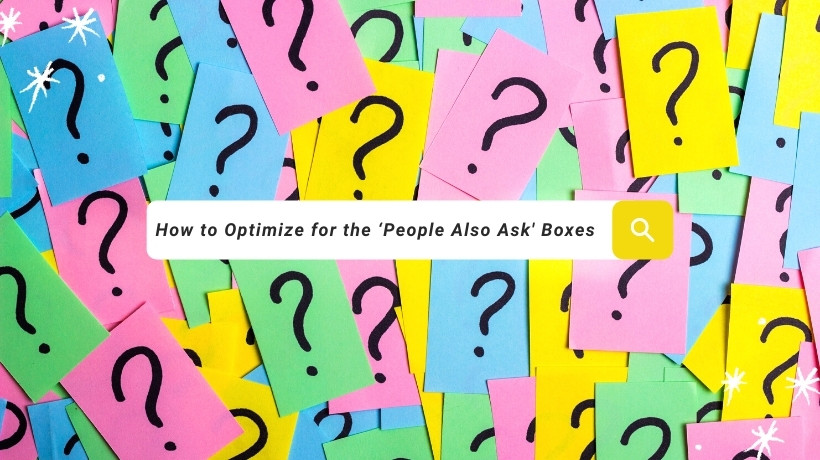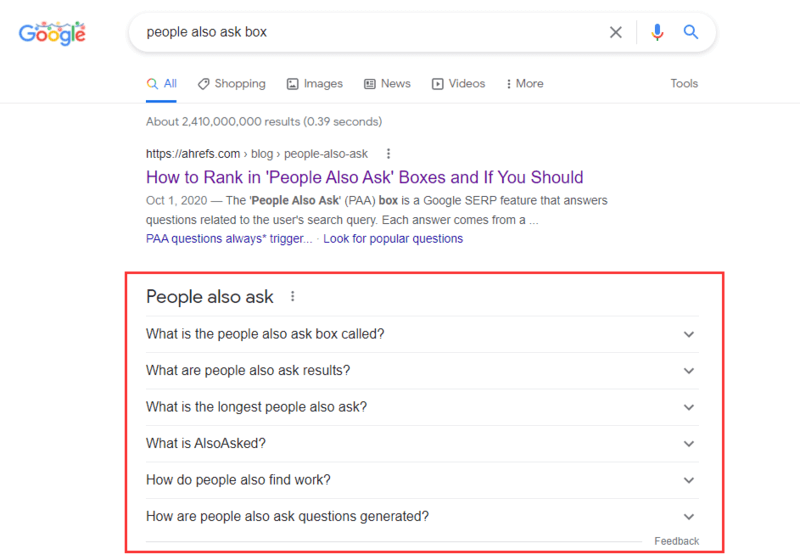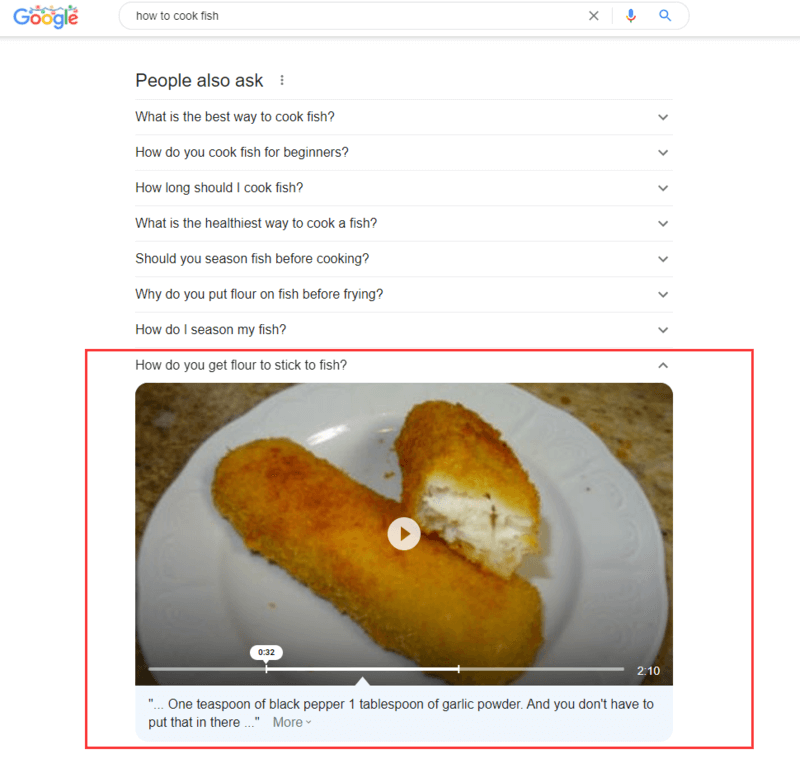How to Optimize for the ‘People Also Ask’ Boxes
People Also Ask (PAA) boxes are occupying prime positions (sometimes as the second or third result) in Google SERP real estate. So, many marketers want their content to appear in People Also Ask boxes for a chance to earn traffic.
There are several ways to improve your chances of ranking in those People Also Ask boxes on a Google SERP. Today, you’ll learn 6 actionable tips to help you optimize your content and make maximum People Also Ask SEO opportunity.
Let’s dive in.

Contents
What is People Also Ask?
People Also Ask (PAA) boxes are a search element that displays questions that are related to the current search query. On clicking a question, the box expands to display a text snippet with a brief answer to the question. It also shows the URL for the text source and a shortcut link for performing another Google search for that question.
According to SEMrush, 75% of the time a PAA result appears, it is within the top 3 results in Google, providing a good chance of high visibility. The most common types of queries that trigger PAA boxes are those that start with question words, such as “what”, “why”, “when”, “where” and “who”.

Key Facts About People Also Ask On Google Search
- PAA can be displayed in different SERP positions.
- Initially, a People Also Ask box contains a set of four questions, however with a click on each question, about two or more additional questions to the PAA box. Hence, since questions are being infinitely added to the box, the PAA boxes are ever-expanding.
- PAAs can trigger video results that are more interactive and explanatory for a query: From an opportunity viewpoint, you can optimize your YouTube and video results to be eligible to appear in PAAs.
- PAA questions are frequently repeated for the same search topic and also trigger featured snippets.
- PAAs have a feedback feature.

Why Do PAA Results Matter Anyway?
1. PAA Helps User Find Answers Quicker
The primary purpose of incorporating PAA into SERPs is query refinement. People Also Ask, autocomplete suggestions, and related search links are all geared towards refining user searches. These three enable users to find specific information from a general keyword. Sometimes, people type vague keywords that do not signify their true search intent because they do not know what to search. PAA and similar page elements allow for greater specificity in the results.
2. Ranking for PAA will Boost Organic Clicks
Ranking for People Also Ask questions certainly increases your organic impressions, but it can also boost your organic clicks.
As we mentioned earlier, SEMrush suggested that PAA features on around 75% of the queries. And, they are within the top 3 results in Google where has a great exposure.
As you can see above, PAAs have a big impact on SERPs. So if you’re looking to increase your search visibility, you need to target related questions and optimize for PAAs.
How to Rank in ‘People Also Ask’ Boxes?
1. Research PAA Questions
The first step to ranking for PAA snippets is to create a list of questions that people are already asking.
Handpicking phrases can be inefficient, and the best way to find related questions for your target keywords (or topics) is to use tools.
Answer The Public is the best free keyword research tool that can help you find a ton of related question queries for any search term.
Once you’re done with the PAA related questions selection, you can follow the tips below to create content in the right way.
2. Keep Answers Short
The average answer length seems to be 40-45 words. Answer questions immediately and concisely, and you’re more likely to rank in the PAA box.
The best practice is to write a simple and concise paragraph, maybe 2-4 sentences that quickly explains the topic. You can then write a deeper analysis of the topic showing specific examples or giving stories.
3. Use Subheading Smartly
Subheadings have an important role to get featured in PAA boxes. You need to use subheadings in a smarter way.
Make sure to use subheadings that end with questions. Also, each section should have a descriptive headline that incorporates your target keywords.
For instance, in this post, I use 3 subheadings;
- What is People Also Ask?
- Why do PAA results matter anyway?
- How to rank in ‘People Also Ask’ boxes?
4. Breakdown Your Answer to Steps or Numbers
When you’re breaking down any topic to make it easily understandable, make sure you go with 1,2, 3… pointing system. Let’s assume, you’re writing a blog on “How to Do Keyword Research for SEO”, you should break it down as follows:
Step 1. Find & Generate A Keyword List
Step 2. Analyze and Filter Your Keywords
Step 3. Segment and Prioritize Your Keywords
Step 4. …
And don’t forget to add descriptions under each point. This helps to get featured in the PAA boxes.
5. Add FAQ
Another thing you can do to rank for PAA is to use an FAQ section for most of your content. FAQ sections not only help your blog audience but they can increase your chances of ranking for People Also Ask SEO.
Also, you can use Question schema to enable the FAQ schema markup on your website. If you’re using WordPress, you can install free plugins for FAQ schema to easily add schema markup.
6. Use Popular Questions as Titles, Headings, And Lists On the Website
Yes, it is easy. Just use the popular questions related to your targeted keywords as titles, headings, and lists on your websites.
Final Thoughts
While providing some very valuable insights on what types of questions people are asking in relation to your business or the products you offer, People Also Ask boost organic traffic on your website.
We have already discussed the strategies that you can use to optimize your content to appear on PAA. Start to use them to maximum your People Also Ask SEO opportunity.
